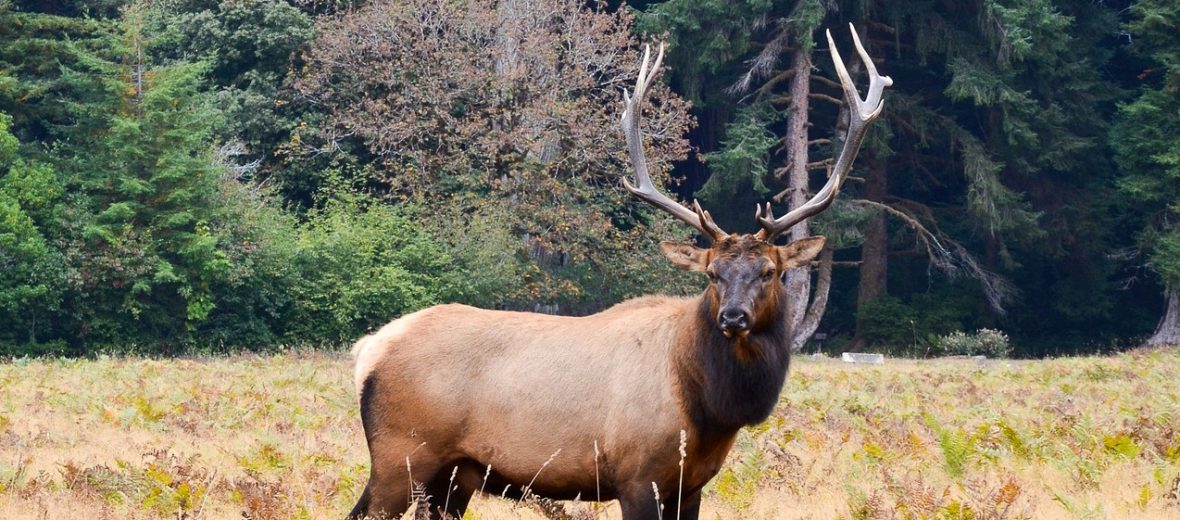
The North American elk, aka wapiti or waapiti, hails from Canada and the United States. There are many subspecies of elk here in the U.S., Canada, and in Asia. They suffer the threats of habitat destruction (due to mining and deforestation; vehicle strike (being hit with vehicles); fire suppression; hunting; and trapping. However, their numbers are actually increasing and thus they are listed as Least Concern by the IUCN.
First the Stats…
Scientific name: Cervus canadensis
Weight: Up to 1,100 lbs.
Length: Up to 8 feet
Height: Up to 5 feet, at the shoulders
Lifespan: Up to 13 years
Now on to the Facts!
1.) The wapiti is among the largest member of the deer family. The moose is the largest.
2.) The name “wapiti” is derived from the Cree and Shawnee and means “white rump.”
3.) These large critters graze on plants, grasses, leaves, and bark.
4.) They are preyed on by black bears, bobcats, coyotes, and wolves.
5.) Only the males have antlers that they shed each year.
But wait, there’s more on the North American elk!
6.) They prefer deep forested and mountainous forested habitats.
7.) These elk have been around for approximately 25 million years.
Did you know…?
Their antlers grow at an incredible 0.98 inch per day!
8.) There are 6 recognized subspecies from North America and 4 from Asia.
9.) While their antlers are growing, a layer of highly vascularized skin, called velvet, covers and protects the developing bone underneath. This skin is shed in the summer when the antlers have stopped growing.
10.) Each antler grows around 6 tines (points). But antlers with more have been seen.
But wait, there’s still more on the North American elk!
11.) Even though they spend much of the year separated into gender specific herds, during the summer, herds of up to 400 individuals can gather.
12.) Males attempt to intimidate fellow male bulls via antler displays and bugling (calling). If neither bull retreats, a fight will break out – called sparring. This battle can sometimes result in serious injuries.
13.) Females are in estrus (heat) for only 1 – 2 days out of the year.
14.) The female will undergo up to a 262 day gestation (pregnancy) that yields a single calf.
Now a Short North American Elk Video!
Be sure to share & comment below! Also, check out the Critter Science YouTube channel. Videos added regularly!
Want to suggest a critter for me to write about? Let me know here.
Think you know a lot about critters? Try your hand at these fun, free quizzes:



